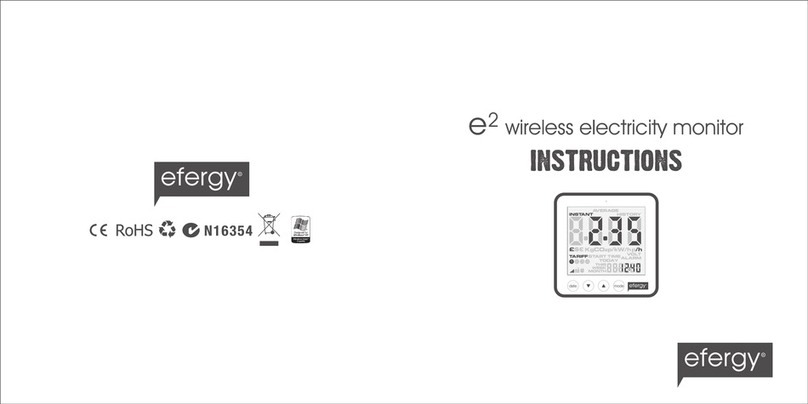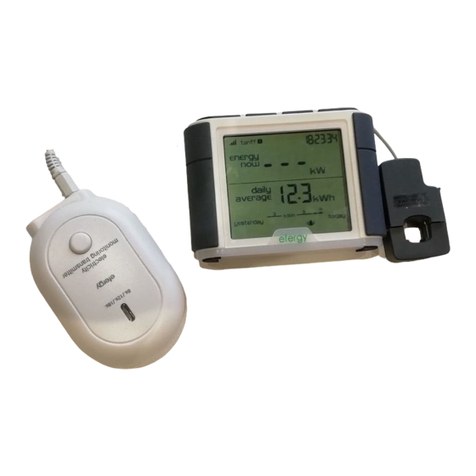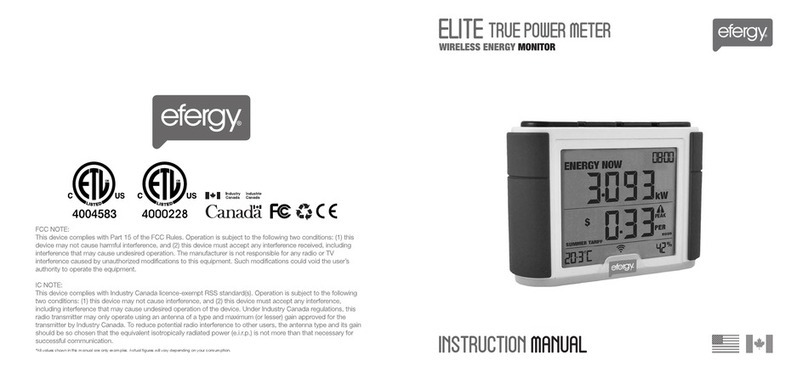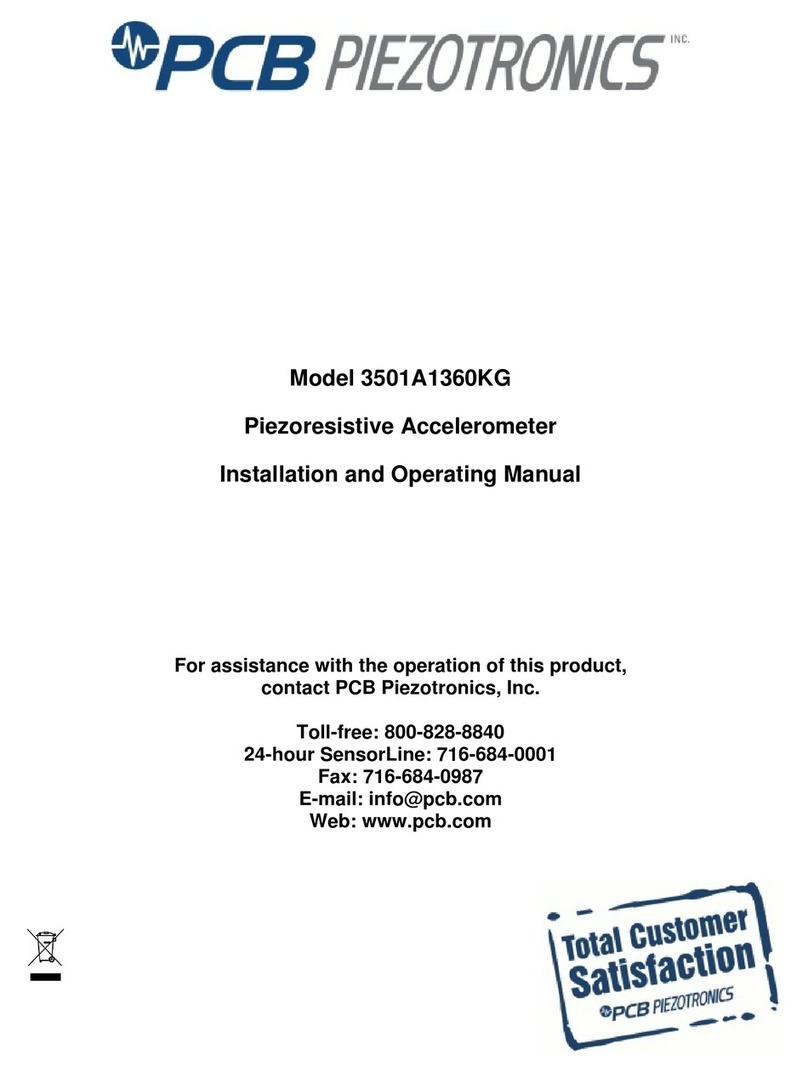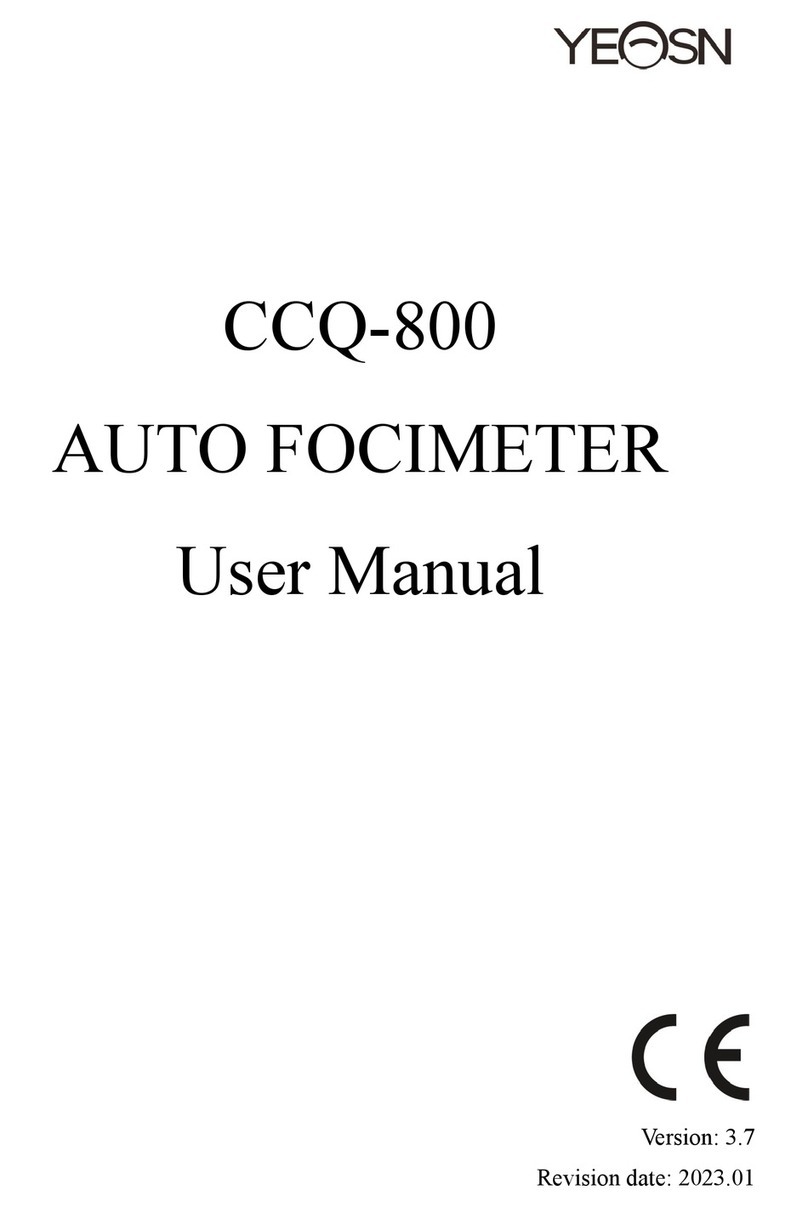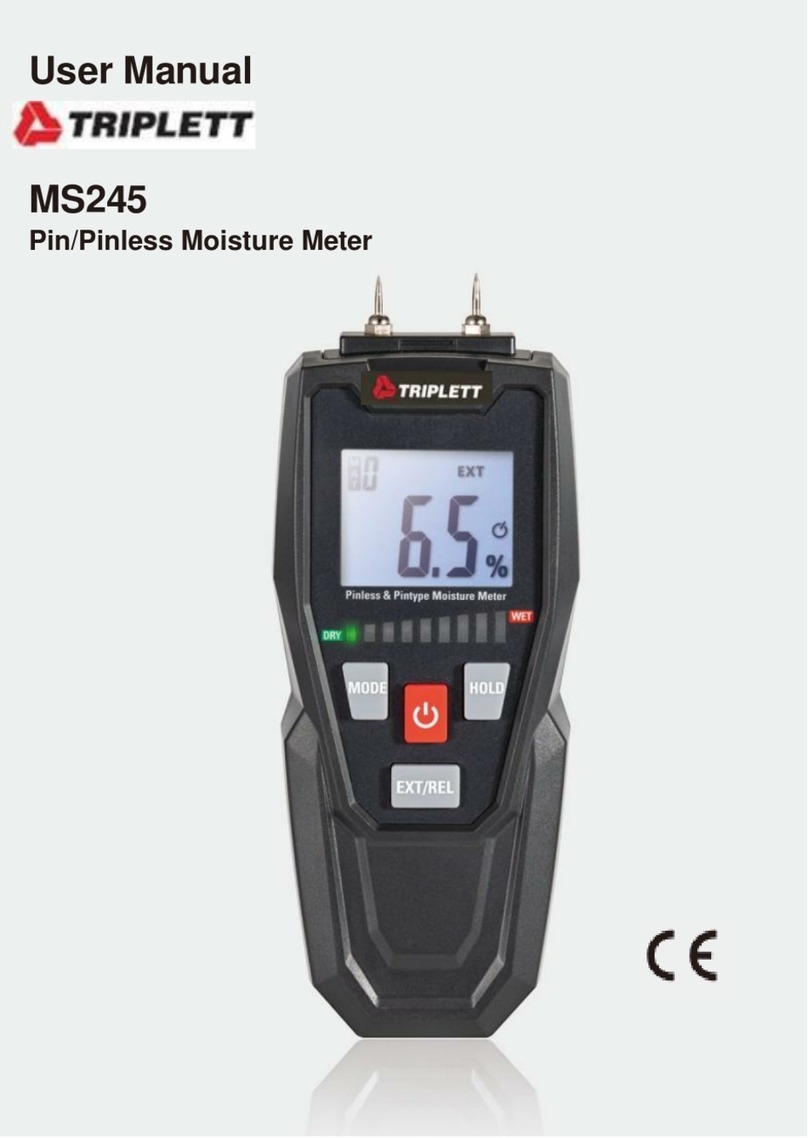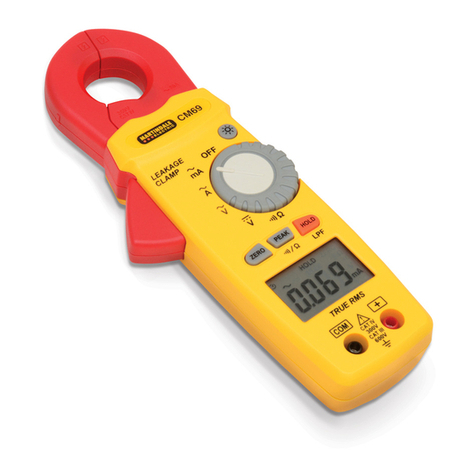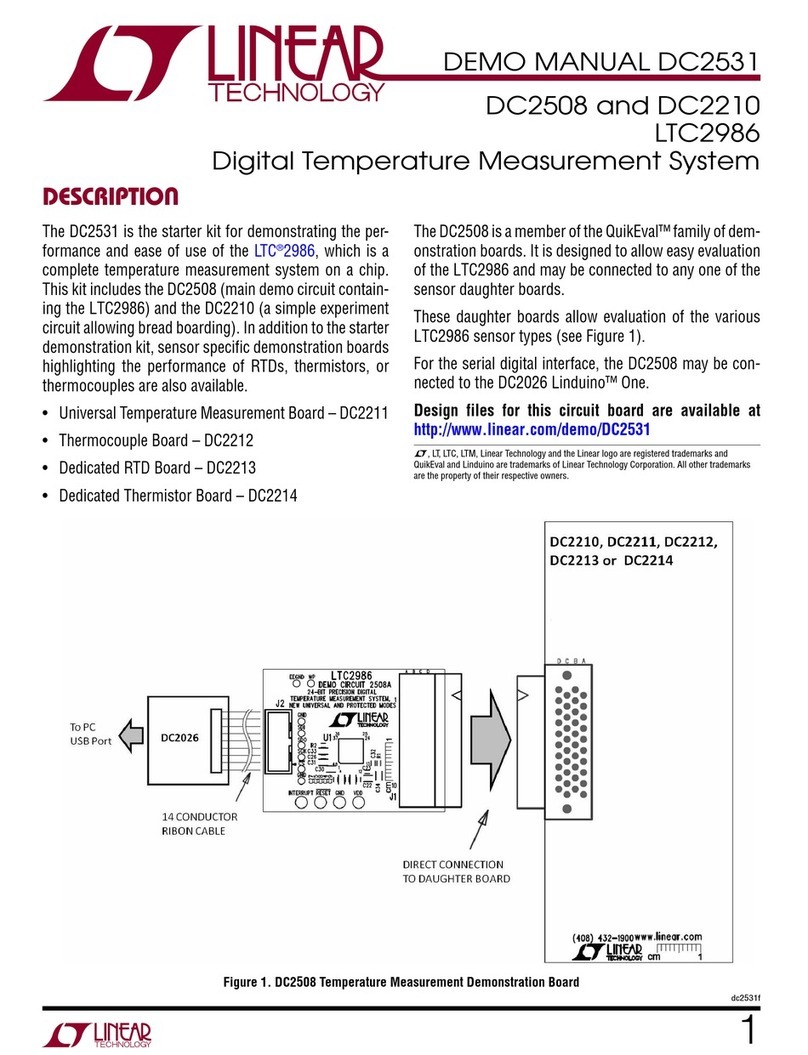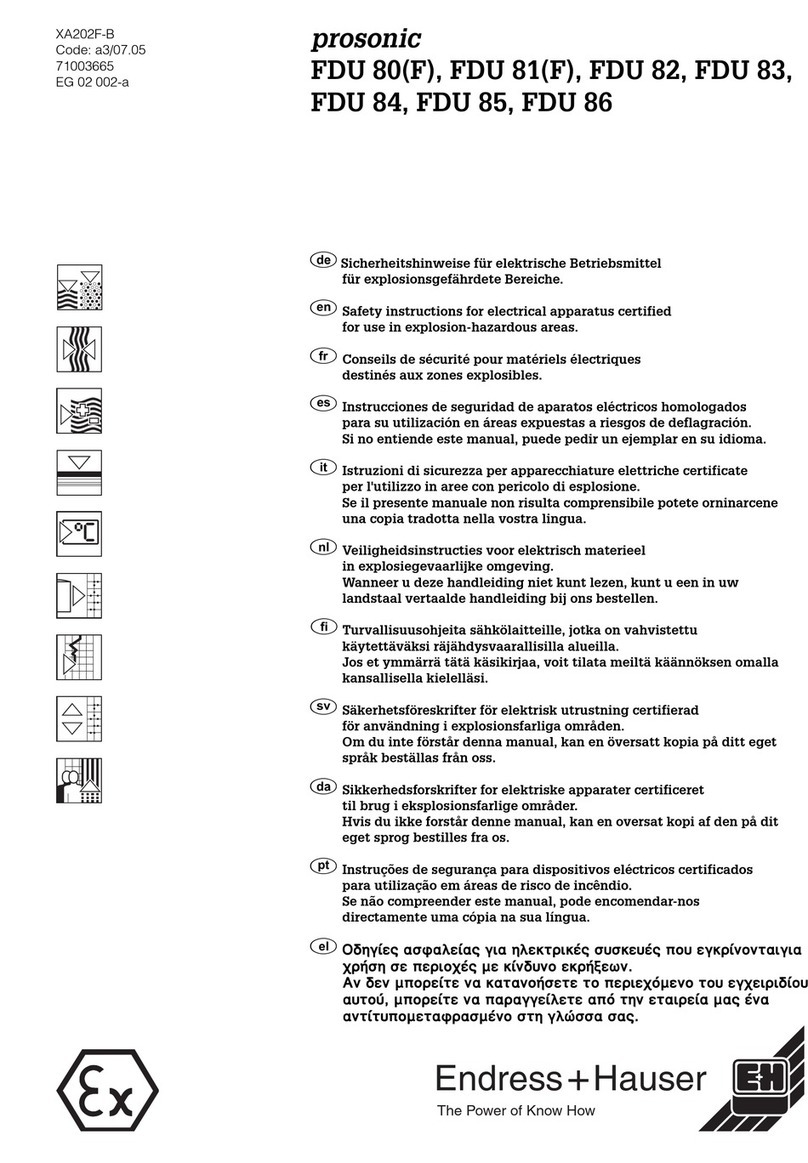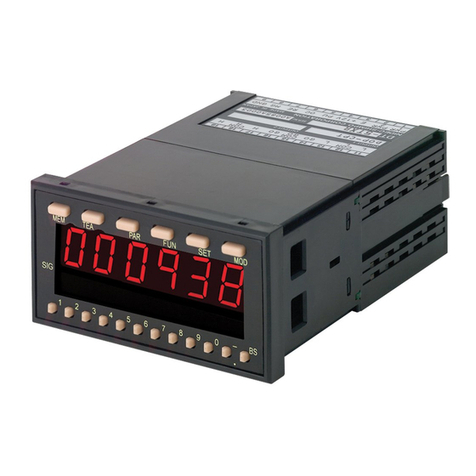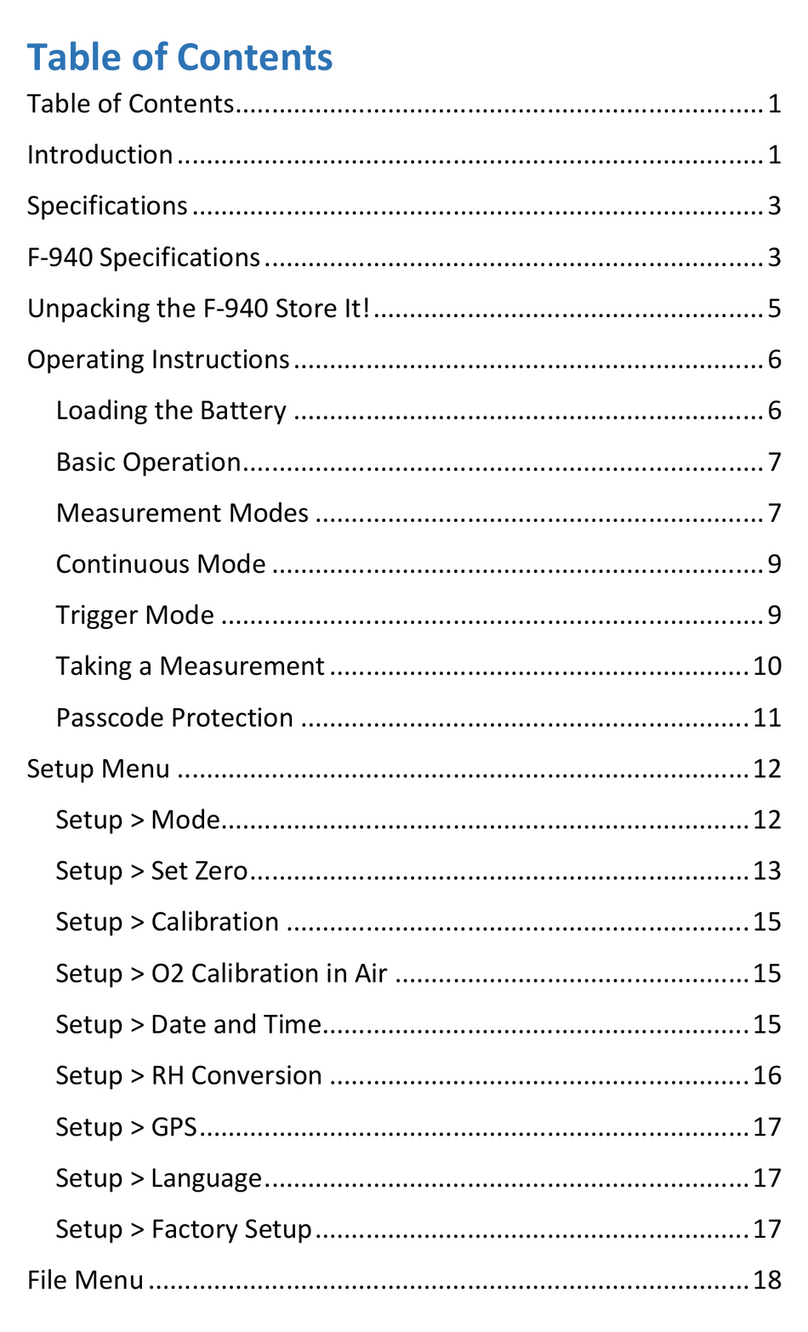Efergy Elite True Power Meter User manual

Efergy True power Meter
Instruction manual

1
INTRODUCTION
WARRANTY
SAFETY INFORMATION
IN THE BOX
HARDWARE INSTALLATION
Find the main feed wires
Installing the AC/AC adaptor
Install the sensors
Connect to the transmitter
Link the transmitter and monitor
MONITOR SETUP
Setting time and date
Currency
Programming the tariffs
Summer tariff
Winter tariff
Carbon emissions ratio
Alarm
Temperature
GET FAMILIAR WITH THE DISPLAY
HOW CAN I REDUCE MY ENERGY USE?
CUSTOMER SUPPORT
TECHNICAL DETAILS
2
3
4
6
7
9
10
11
12
13
15
16
16
17
18
19
20
20
20
21
23
25
26
CONTENT

INTRODUCTION
Energy metering and monitoring are at the heart of energy management, understanding when and where
your energy is consumed is key to saving money.
Efergy Energy Meters show the amount of energy that a household is consuming at the time the display
is read. The display can also give the user a reading showing usage in financial terms.
You can walk around the home with your monitor device, switching appliances on and off, to see the
difference that each one makes. With a few small changes in your consumption behaviour the monitor can
help you reduce your energy costs.
2

3
WARRANTY
To obtain maximum benefit from this warranty, we recommend you to:
- Read this instruction manual for safe, proper and efficient use
- Keep your original receipt
Efergy warrants this Energy Meter for the period of 1 year, from the date of delivery, to be free of defects
in materials or workmanship (excluding batteries).
This warranty does not apply to normal wear and tear, and does not cover replacement of any
components damaged in any way by misuse, abuse, neglect or due to modifications made by any person
other than those licensed by Efergy.
This does not cover cracks or scratches to the device or the screen. The repair or replacements of the
hardware or of any of the component(s) are the exclusive remedies provided in conjunction with the supply
of the Efergy real time monitor.
In no event shall Efergy be liable for any direct, indirect, incidental, special or consequential loss or
damages whatsoever caused by the use of the Efergy Energy Meter even if Efergy have been advised of
the possibility of such damages.

4
SAFETY INFORMATION
WARNING! Your electric panel contains energized parts. This device must be installed by a
qualified electrician, unless otherwise permitted by local regulations.
It is important that you take some simple precautions before using this product. Incorrect use or
poor safety practices can result in injury or fatality. Whenever possible, turn off the main breaker
outside your home feeding power to your electricity panel.
When installing the Efergy Energy Meter you should find that everything is straight-forward. However,
there are a number of important health and safety issues which you need to be aware of:
The current sensors clip onto the supply cables inside the main electrical panel, which delivers
power to your home.
Do not touch any metallic connections during the installation of the sensors. Do not carry out
this installation if under the influence of alcohol or drugs.
Remember the device is not intrusive and does not require rewiring; no wires or cables need to
be cut, removed or modified to perform this installation. If you notice anything unusual about the
electricity supply such as loose wires, exposed cabling, burn marks, holes in the insulating
materials or damage to the electric wires in the service panel or where the sensor is to be
attached, stop immediately and report the findings to your supply company.

Efergy energy monitoring systems are considered plug and play devices that meet all regulatory
requirements for installation in the United States and Canada.
Do not force or bend the cables at any point during installation. If you are worried or have any
concerns about the installation, please contact a qualified electrician immediately.
The user does not need to remove the sensor throughout the working life of the unit. Battery
changes are performed on the transmitter and on the display. There are no batteries to change in
the sensor.
Even with the main breaker in the off position, the connection lugs where the main wires
terminate at the main breaker may still be live with potentially lethal voltage. Stay clear of these
connections during the installation of the sensors.
The sensors are insulated so do not be concerned if they slide down the main wires to the
breaker after being secured around the insulated wires. A plastic tie wrap (with 5cm of the tie not
cut off) secured to the main wire under the desired location for each sensor may be used to keep
them from sliding down the wires.
Millions of these systems have been installed world wide without incident but please follow safe
working practices as outlined during the installation.
5

IN THE BOX
The Efergy True Power Meter pack contains the following elements:
During the installation you may also need:
6
Protective
gloves
Screwdriver Flashlight Hammer
1 x Monitor 1 x Transmitter 2 x XL Sensor
1 x Instruction manual2 x Anchors
2 x Screws
1 x AC/AC adaptor
1 x AC/DC adaptor

HARDWARE INSTALLATION
Efergy Energy Meters are installed by clipping the sensors around the feed wires of your electric panel.
In Canada and the United States, the residential voltage is 120V for small appliances and lighting and
240V for major appliances and equipment, such as central air conditioner, electric water heater and oven.
The AC/AC adaptor also needs to be installed on your service panel, this accurately measures the voltage
of your residence and powers the transmitter. Take care to follow the instructions within this guide during
the installation and call a qualified electrician if you have any doubts during this process.
Note: For a 120/240V panel (typical residential electric panel) power is measured using two XL sensors.
Set the reference point voltage during Monitor Setup to 120V or 130V for most rural installations. For
professional installation please consult the Technical notes for electrician section (see page 26).
7

Monitor installation considerations
The meter can be wall-mounted at a convenient location or taken throughout your home to determine
how much different electrical loads consume. Efergy Energy Meters update every 10 seconds, so you
can apply any new load and watch for the change in the reading on your display.
O pen and place one
sensor around each
mains cable
Do not touch below this level
Plug the sensors’ jacks into
the transmitter
Place the sensor around
the cable. Push the clasp to
close securely.
Pull the clasp to open the
sensor.
1
2
3
Fig. 1 Typical service panel
8

Find the main feed wires
__________________________________________________________
Locate your electrical panel
Hardware installation follows the same steps in
this case as with an 120/240V panel.
You can normally find your main electrical panel
inside your home on the other side of the wall
from your electric utility meter. You may also
follow the conduit from your utility meter. In many
cases it is located in the garage, utility room,
laundry room or hallway inside your home. If you
live in an apartment, it may be in the kitchen, a
utility closet or hallway. Also in the case of an
apartment, your voltage may be 120/208V.
Find the main feed wires for your home
Remove the outside cover from your electrical
panel and locate the main feed wires. You should
find up to four feed wires entering your main
electrical panel: two black wires, one white wire
and one green wire (there may not always be a
green or bare ground wire). The two black wires
(or sometimes one black and one red) are the live
wires feeding the panel, these are the wires used
to measure the power being used in your home
or business.
9

Install the AC/AC adaptor
__________________________________________________________
Step 1 - remove a knock out
Either wear proper protective leather gloves or turn off the power to carry
out this installation. Carefully remove a standard ½” knock out in the sub
portion of your service panel. Remove the locknut from the AC/AC
adaptor and pass the wires through the knock out as shown.
Run the locknut over the black and white leads of the AC/AC adaptor as
shown.
Step 2 - Screw the locknut
Screw the locknut onto the threaded hub of the AC/AC adaptor securing
the adaptor in place through the wall of the service panel as shown.
Note: The AC/AC adaptor is only to be used for powering the Efergy True
Power Meter Transmitter.
Step 3 - Install the white wire
Remove sufficient insulation from the end of the white wire, exposing the
bare conductor. Secure the exposed bare wire under a screw on the
neutral buss bar of the service panel. Typically, this will be an open solid
buss bar within the panel that will have many wires with white installation
secured to a common buss.
10

11
Step 4 - Install the black wire
Remove sufficient insulation from the end of the black wire, exposing the
bare conductor. Turn off any 15A single pole breaker and secure the
exposed bare wire under the breaker attachment screw. If all breakers
are in use, do not place two wires under the screw on the breaker.
Pig-tail the wires together into an approved wiring connector and
connect a single wire to the breaker.
Install the sensors
__________________________________________________________
Install a bushing
Locate a circular knockout and install a rubber bushing
(not included) on the top, side or bottom of the service
panel box that is convenient for routing the sensor wires.
Attach the sensors
Place the sensors around the feed wires of your electric
panel. Pull the clasp to open the sensor, place it around
the feed cable and push the clasp to shut.
The bushing is then pushed on to the sensor wires
outside the panel and then snapped into the hole.
Replace the panel cover(s) when finished installing the
sensors.

12
Connect to the the transmitter
________________________________________________________
Plug the sensor lead with the “L” into the left port on the
transmitter, the sensor lead “R” into the centre port on the
transmitter, and the power supply lead into the square right port
on the transmitter. Turn on the circuit breaker used for the
AC/AC adaptor.
Then mount the transmitter on the wall next to or above the
electric panel. This will make it easier to replace the batteries.
If the panel is in a finished area, you may mount the transmitter
inside the electrical panel. This may reduce transmission
distance.
Replace the panel cover(s) when finished installing the the
adaptor and sensors. L
R
Insert 3 AA batteries into the
back of the transmitter.
AC/AC
adaptor
output

13
Link the transmitter and monitor
__________________________________________________________
Note: The transmission frequency is 10s. This means the transmitter is sending information to the
display every ten seconds.
Power on the monitor by plugging it into a
household power outlet with the included AC/DC
power adaptor, or insert 3 AA batteries into the
battery compartment located on the back of the
monitor (make sure you match the negative (-)
and positive (+) ends of the batteries with the
markings inside the battery case).
Press the LINK button on the back of the monitor
and hold for two seconds. The transmission
signal symbol will flash for one minute or until
the transmitter and monitor are linked.
LINK
DC 5V

14
The transmission signal symbol will flash for
one minute or until the transmitter and monitor are
linked.
While the transmission signal symbol in the
display flashes, push the button on the transmitter
and wait until the transmission signal symbol
becomes solid.

MONITOR SETUP
The monitor needs to know the time, date, unit cost per kWh charged by your electricity supplier, along
with voltage and alarm settings. The following steps will move through each of these settings.
15
Humidity
Time and date
ForwardBackward
Temperature
Push HISTORY button at any
time, your settings will be
saved and you will exit the
function setting mode.
Press and hold down
MODE/SET button for three
seconds to enter the setting
mode.
Transmission
signal

Setting time and date
Press and hold for 2 seconds the TIME SET. button located on
the reverse of the monitor. The time setup will flash on the
display.
Use the BACKWARD and FORWARD buttons to set the hour.
Press the MODE/SET button once to save. Repeat the same
process to set the minutes. Once the correct time and date
have been set, push the MODE/SET button to save and move
onto the date setup.
Set the month by using the BACKWARD and FORWARD
buttons. Press the MODE/SET and move onto the day and year.
Repeat the same process and then press the MODE/SET button
to save and exit.
16
Currency
Press and hold the MODE/SET button for 2 seconds. Select the
currency using the BACKWARD and FORWARD buttons.
Default currency will be $. Push MODE/SET button to confirm
and to move onto tariff selection set up.

Programming the tariffs
Your monitor is pre-programmed so this process may not apply for you.
Your monitor has been pre-programmed from the factory in
accordance with the standardized Ontario time of use tariffs, including
weekends as off-peak. The display will also automatically change from
the ‘Summer Tariff Structure’ to the ‘Winter Tariff Structure’ in
accordance with your Ontario utility.
In the future, should any changes be required due to new tariff rates
or structures, your display may be easily re-programmed using the
following steps:
Program Design: The program has been divided into summer and
winter tariffs. Both summer and winter seasons are divided into 5
tariffs. Tariffs 1 through to 4 in both groups represent the 4 tariff
settings for weekdays (Monday-Friday) and tariff 5 is for weekends
(Saturday-Sunday). Keep in mind that tariff 5 is preset for weekends,
therefore you only need to set the tariff
cost using the off peak rate.
Start Programming: To start your manual programming press and
hold the MODE/SET button for 2 seconds. The currency symbol will
appear, this has by default been set to ‘$’, press the MODE/SET button
to go to the tariff and cost settings.
Note: The monitor uses a 24h clock
Tariff examples
Summer (May1-Oct31)
Weekdays
17

☼ Summer tariff
Press the MODE/SET button to enter tariff hours setting - you will
note that the words SUMMER TARIFF 1 will appear. The 1
represents the tariff times for weekdays (represented by 1, 2, 3,
4) and weekends (represented by 5). The time setting FROM will
be flashing at the top right, use the BACKWARD and FORWARD
buttons to change the hour, then press the MODE/SET button
to set. On pressing the MODE/SET button you will confirm the
FROM time and will move to set the TO time. Follow the same
routine to set the TO time.
Pressing the MODE/SET button will complete the tariff time
setting for SUMMER TARIFF 1. Next you will see the words
SUMMER TARIFF 2. Again proceed using the BACKWARD ,
FORWARD and MODE/SET buttons to adjust and set the time for
tariff 2. Proceed as above through all 3 tariffs. The fourth tariff
will not appear as the balance of the 24 hour clock is accounted
for. You will only need to program cost in tariff 4 and tariff 5
(weekends). Press MODE/SET button again to progress onto the
tariff costs.
Tariff Pricing
On completing the above, pricing will appear next. Use the
BACKWARD and FORWARD buttons to increase or decrease
the cost and press the MODE/SET button to confirm. As you
work your way through the modes each tariff will appear on the
bottom right of the screen i.e: 1, 2, 3, 4, 5. The fifth period is set
for weekends as ‘off peak’, you only need to set pricing, no time
setting is required as it is preset. 18

19
Winter tariff
The programming procedure for winter tariffs is identical to the
summer tariffs, you will see WINTER TARIFF 1 on the monitor.
Use the MODE/SET button to access and the BACKWARD and
FORWARD buttons to adjust time values. Press the MODE/SET
button to set and proceed as above through all 3 tariffs. The
fourth tariff will not appear as the balance of the 24 hour clock
is accounted for. You will only need to program cost in tariff 4
and tariff 5 (weekends). Press MODE/SET button again to
progress onto the tariff costs.
Tariff Pricing
Pricing will again follow the same process as the summer tariff
settings, use the MODE/SET and BACKWARD and FORWARD
buttons to manoeuvre through the time, tariffs and set pricing
for WINTER TARIFF 1, 2, 3and 4. The fifth period is set for
weekends as off peak, so you only need to set pricing. No time
setting is required as it is preset.
You have now completed your manual tariff programming.
Press MODE/SET button to move onto the set-up for CARBON
EMISSIONS RATIO, ALARM, and TEMPERATURE.
Note: To exit the programming section at any time press the
HISTORY button.
Table of contents
Other Efergy Measuring Instrument manuals
Popular Measuring Instrument manuals by other brands
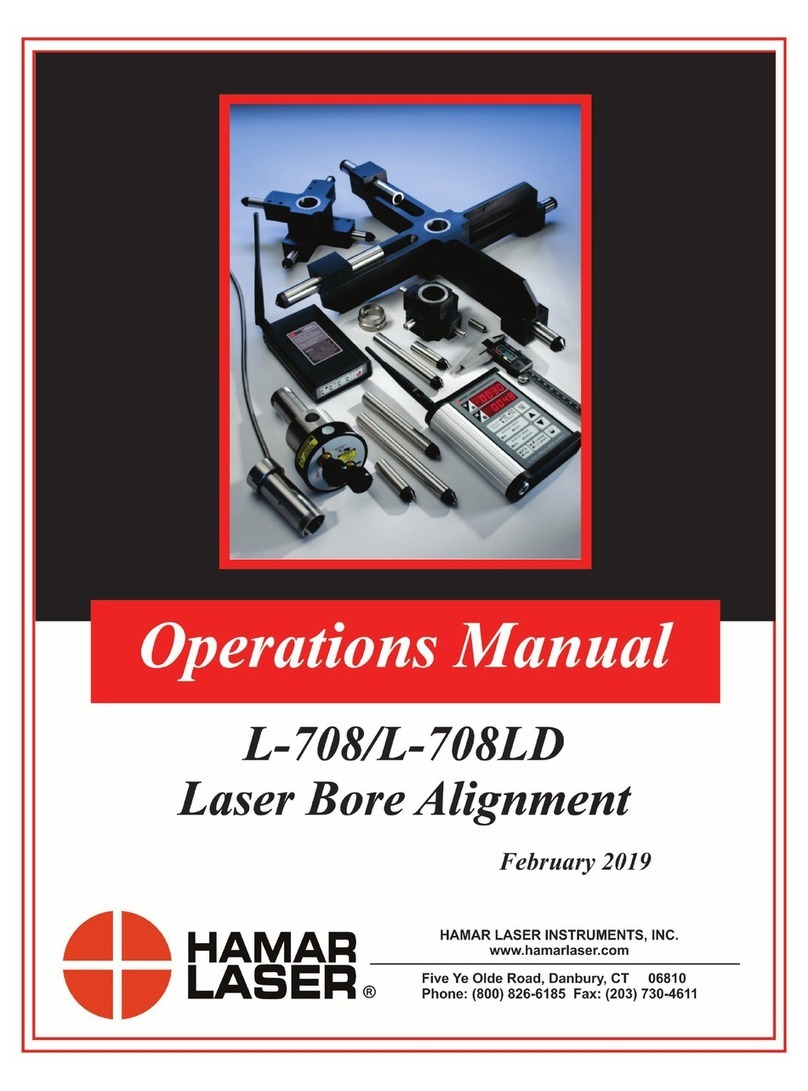
HAMAR LASER
HAMAR LASER L-708 Operation manual
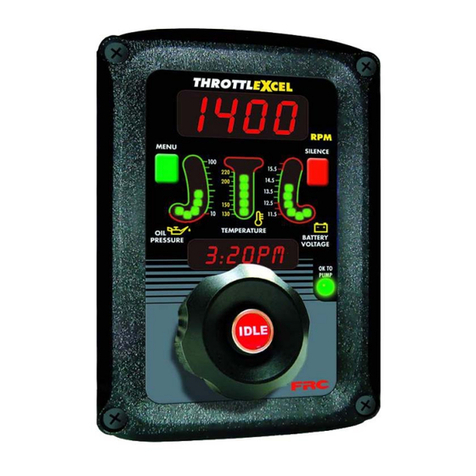
FRC
FRC ThrottleXcel ELA100 manual

International Light Technologies
International Light Technologies CureRight ILT800 instruction manual
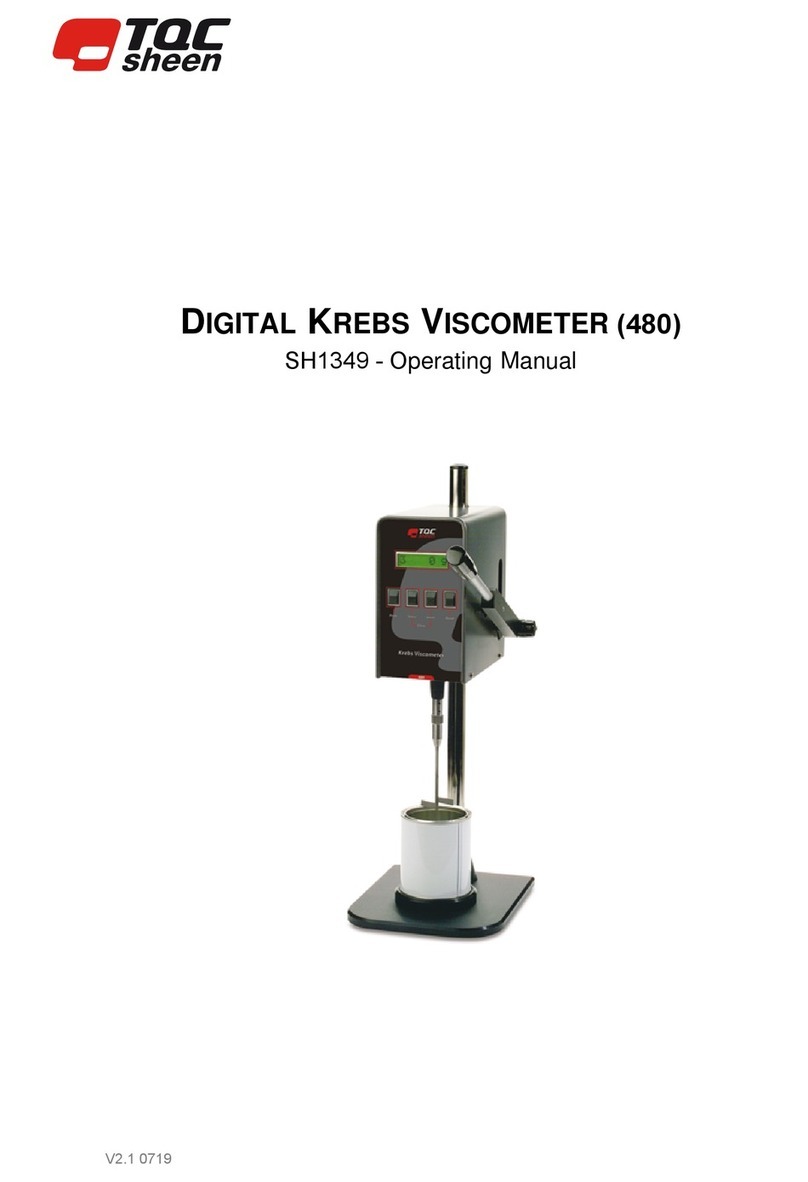
TQC Sheen
TQC Sheen SH1349 operating manual
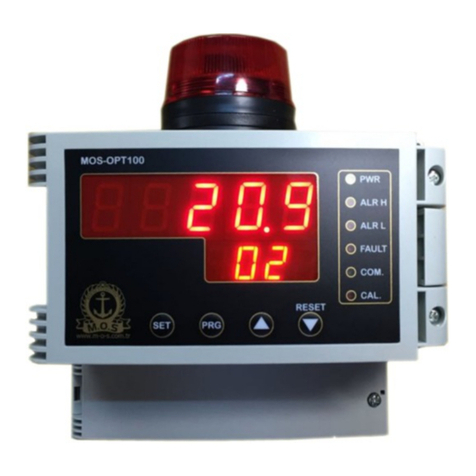
MOS
MOS OPT100 instruction manual

Tractel
Tractel dynafor LLXh Series Operation and maintenance manual

